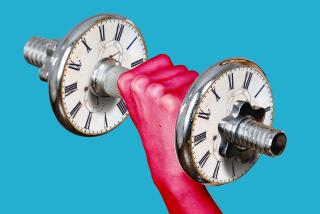Proper Breathing While Exercising Can Boost Your Power
Breathing usually takes care of itself. But in many exercises and sports, breathing technique is an important part of proper form and peak performance. Conscious control of your breathing during certain moves can give you more power and help prevent injury.
You’ll get a lot of conflicting advice from trainers about breathing, and even much of the literature can be confusing. Let’s look at some common recommendations:
Breathe normally. If you’re lifting very light weights, you may be able to breathe normally. To lift heavier weights, however, you must regulate your breathing.
Don’t hold your breath. Of course you need oxygen, especially during cardiovascular workouts. Yet in weight training or in performing power moves such as tennis strokes, hitting a baseball or gymnastics exercises, you must hold your breath to deliver greater force.
Keep your mouth open when lifting heavy weights. This advice is intended to prevent the Valsalva maneuver, a forced exhalation against a closed glottis (the opening between the vocal cords in the larynx). But in weight training or explosive sports like the long jump, high jump or shot put, you need a partial Valsalva effect.
Exhale slowly. When you exhale slowly during a lift or explosive sport move, you decrease the Valsalva effect and leave your spine in a weakened position. You lose force and may injure yourself when lifting heavy weights.
Exhale as you push the weight up. When you exhale, you greatly decrease thoracic pressure, which places your spine in a vulnerable position.
Plus, when you start a lift by inhaling and holding your breath, you may be able to safely handle the weight. But if you exhale, the weight may become too heavy, since your force is decreasing. As you lose rigidity of the spine, you are less able to transfer force from your legs to your arms.
Proper Breathing
What, then, is the best way to breathe when weight training or performing a power move in sports? Proper technique involves forced inhalation, holding your breath and forced exhalation.
Simply put, holding your breath creates a rigid chest. This pressure in the thoracic cavity provides added support for your spine. At the same time, you keep your lower spine rigid by contracting your abdominal muscles. The combined effect helps you transfer all the force from your legs to your arms, and in the process you can perform the movement safely.
When you use a partial Valsalva effect in this way, you increase your strength. Studies show that when you hold your breath during a lift or sports move, you exert a greater force. You produce less force when you exhale, and less still when inhaling.
This technique gives you an edge in activities that require a rapid and maximum application of force for a short duration. You want the beneficial effects of increased pressure and tension in the abdominal and chest cavities.
The key is learning to hold your breath momentarily. In proper breathing, you forcefully exhale when you’ve completed the move to quickly relieve the thoracic pressure.
Exhaling slowly is safe and advisable when you take in too much air. Slowly releasing some of the pressure will prevent the adverse effects of the Valsalva maneuver, while maintaining its positive effects.
Precautions
Without question, the Valsalva maneuver can be dangerous.
People with heart or vascular conditions such as high blood pressure shouldn’t try all-out straining exercises. Similarly, if you hold your breath too long, the technique may cause dizziness or fainting. Increasing pressure in the chest cavity reduces blood flow to the heart and interrupts the oxygen supply to the brain.
The Valsalva maneuver is most dangerous when you reach your sticking point in lifting heavy weights. (The sticking point is that part of the lift in which it is most difficult to keep the weight moving.)
Instead of realizing that the weights are too heavy or that the repetitions are too many, and stopping the lift, many continue to exert greater force, to no avail. In so doing, they hold their breath too long and can come close to fainting.
Never push too long once you have hit your sticking point. Either give up the lift and rest the weight on the safety rack, or have a spotter help you past this point. Proper breathing is crucial to avoiding ill effects.
Breathing in Practice
Proper breathing technique is best demonstrated in a squat lift. Assume a standing position with a barbell supported on your shoulders, behind the base of your neck.
Take a breath through your nose and mouth, up to about 70% of your maximum breathing capacity. At the same time, tighten your abdominal muscles to create inner-abdominal and thoracic pressure to keep your spine in a strong position.
Hold your breath and lower your body with control. At the bottom position, in which your thighs are parallel to the floor, begin to push up while still holding your breath.
When you get beyond the sticking point, exhale forcefully through your mouth as you complete the squat and relax. Be sure, however, to maintain some tension in the abdominal and chest cavities to support your spine at all times.
If you use light weights or only body weight, you can inhale as you begin the descent. Hold your breath as you reverse direction and push up. Exhale when you complete the lift.
In addition to using your abdominals and breathing properly to create a strong support for your spine, you should involve the erector spinae muscles in your back. Contract them throughout the lift to keep a slight arch in the lower spine. These muscles hold your spine in a natural alignment, which should be maintained throughout the squat.
Points to Remember:
1. Proper breathing involves forced inhalation, holding your breath and forced exhalation.
2. Exhaling slowly is safe and advisable when you take in too much air.
3. Never push too long while holding your breath once you’ve hit your sticking point.
